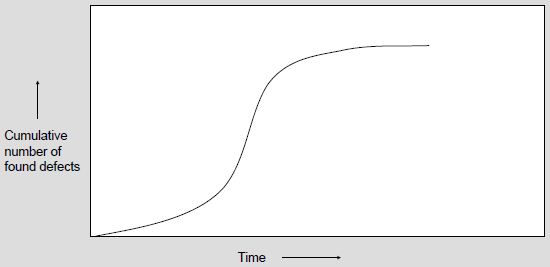Analysing the event
-
Damage prevention: one of the benefits of testing is that in production costs do not arise because faults do not
occur. This could possibly be conveyed by relating the severity and cause of a problem to any repair costs after
going into production: what would the costs have been if the defect had not been found?
-
It is possible to make a model with which the prevented damage of each defect can be estimated. In this, a certain
factor is allocated to aspects of a defect (severity, cause and quality characteristic), e.g. a severe defect
delivers on average 8 times the damage of a cosmetic defect. By estimating the prevented damage of a limited number
of defects with the aid of experts, the factors are determined and the average sum per defect. The prevented damage
of a new defect can then be quickly estimated by multiplying the average amount by the relevant factors (see
[Aalst, 1999])
-
A simple but useful graphic is the S-curve of the cumulative number of found defects per day. Where the S starts to
flatten out, this could be an indication for stopping the testing. In any case, it is an indication that it is time
to discuss whether or not to stop with the stakeholders.

Figure 1: Example of S-curve
Coordinating with the client and other stakeholders
-
A tip that can be given in the above context is, when changes are requested or when the project manager proposes
adjustments to the testing, never immediately to dig one’s heels in and cry “No, not possible, because …” It is
better to respond in the manner of, “Hmm, interesting idea. Let’s tease that out a bit further; what would it mean
in relation to… The idea could work if we all accept these and those consequences.”
-
At the Preparation and Specifi cation phases, the (project) management tends towards indifference in respect of the
testing. Only at the test execution stage, at the point when the testing is on the critical path, is interest shown
in the progress. The test manager should make allowance for this, by, for example, adjusting the form and frequency
of reporting and consulting (more of it, and more frequently, during the test execution) and, in the process, might
well transform his image (from “walkon part” to “star”).
|
